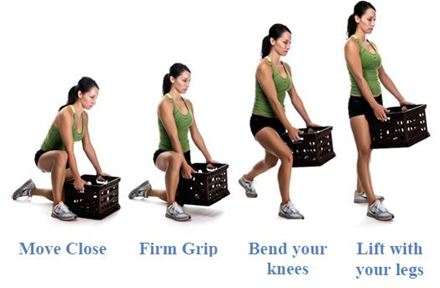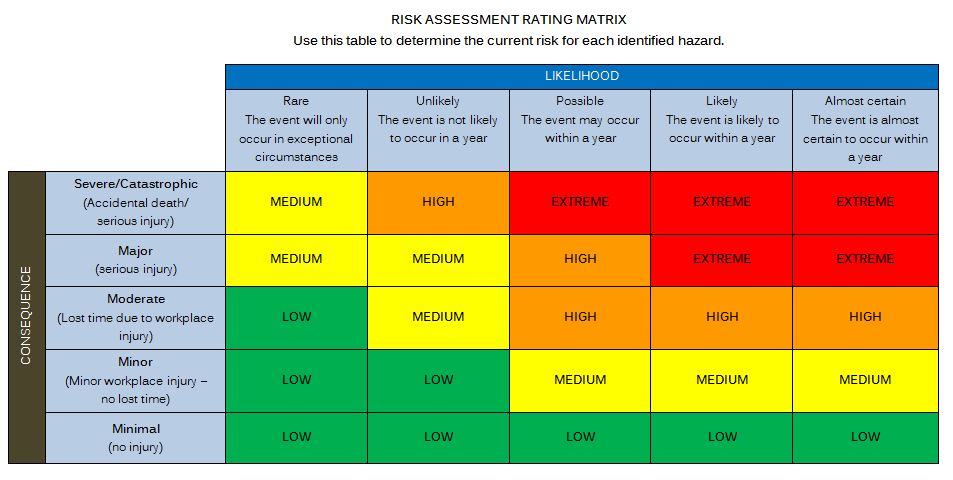HLTWHS002 Follow Safe Work Practices for Direct Client Care
Are you seeking HLTWHS002 Follow Safe Work Practices for Direct Client Care Assignment Answers at the best price? Assignmenthelpaus.com provides Finest Assignment Help Online by academic writers. We have Masters/ PhD qualified writers who assist with plagiarism free content. Students can also avail of our Nursing Assignment Help in Australia for HLTWHS002 Follow Safe Work Practices for Direct Client Care Assessment.
Assessment Detail:-
- Number of Words: 6500
ASSESSMENT TASK 1: WRITTEN QUESTIONS
Question 1
1. Which of the following are hazards? Tick the correct answers
| Is this a hazard? | Tick each correct answer |
| Working with clients in their homes | |
| A strained back | |
| Workplace procedure for manual handling | |
| Showering client | |
| Lifting a box | |
| Working long hours | |
| Stress |
2. What could be the consequence if you did not correctly follow your workplace’s policies and procedures in the following areas? Provide one consequence for each.
- Hazard management
- Care plans
- Manual handling
- Using mobility equipment
- Using personal protecting equipment
- Duress alarm system
- Emergency procedures
- Incident procedures
- Infection control
Question 2
List six things you would check when you are doing a fire safety check on a client’s home.
Question 3
a) You notice that a box of rubbish has been left in the corridor again.
You nearly tripped over a similar box last week and you moved it outside to the rubbish bin – where it should have been placed.
Now someone has done the same thing again!
Why is it important that you report this particular hazard, rather than just moving it out to the bin like you did last time?
b) The residents at the nursing home have put in a complaint that the dining room is too cold. Management has now forbidden the use of the air conditioners in the dining room.
Jenny is concerned that this makes the environment unsafe for the workers. The staff all get extremely hot while serving the meals. It is always a very busy time and they are running around getting the residents in place, serving meals, assisting with feeding, packing up the dishes and so on.
Jenny notices that some of the staff are getting uncomfortable. Ian had sweat pouring off him yesterday and Rebecca was bright red in the face.
By the end of mealtimes they are all hot and bothered.
- Should Jenny report this as a WHS issue to management? Explain your answer.
- What possible solution could Jenny could suggest?
- Jenny’s solution (see your response above) has been approved. She has been asked to assist with putting her solution into effect. Suggest at least three ways that she can do this.
Question 4
Fill out the table below.
Standard precautions
- What are they and when should they be used?
- What precautions should be taken?
Additional precautions
- What are they and when should they be used?
- What precautions should be taken?
Question 5
While you are on a home visit, a client tells you that she is feeling unwell. She has stomach cramps, feels very nauseous and has bad diarrhea.
She tells you she must have picked it up off her grandson who visited yesterday, as he was unwell when he was visiting and had to rush off to use her toilet.
- What responsibility does the client have to the worker?
- What infectious disease do you think it is likely your client has?
- What are three things that should be done to minimise the risk of this spreading to other people?
- Why is this a risk for workers – even though the client is in her own home?
Question 6
List three things you can do to remain up to date with safe work practices.
Question 7
Fill out the table after each scenario.
a) Omar works in Home and Community Care in a rural location. His job is to visit clients in their homes. Due to the large area he services, Omar spends many hours of the day driving to different properties to see his clients.
| List two risks (at least one risk must include damage to musculoskeletal system) | List a control measure for each risk |
| Risk 1: | |
| Risk 2: |
b) Kellie works transporting disabled clients to appointments or to the shops and other locations
| List two risks | List a control measure for each risk |
| Risk 1: | |
| Risk 2: |
Question 8
Look at the diagram above.
Why does this method of lifting produce less strain on the musculoskeletal system than bending at the waist?
Question 9
Jenny was injured at work when using a portable hoist to transfer a client with a disability.
The injury occurred because Jenny was not given any training in how to use the equipment.
Jenny’s supervisor had told her to follow the instructions in the manual – Jenny couldn’t find the manual so she decided to figure it out herself.
- Did the employer show a duty of care to Jenny? Explain your answer.
- Did Jenny fulfil her duty of care? Explain your answer.
- Jenny works in Victoria. She would like to find out more about her WHS responsibilities. What is the name of the WHS authority that Jenny should contact?
ASSESSMENT TASK 2: CASE STUDIES
Case Study 1: Infectious patient
You are working in a residential aged care facility. One of the residents, Frances, recently had surgery on her leg. Unfortunately she has returned from hospital with a methicillin-resistant staphylococcus aureus (MRSA) infection.
You are one of the workers who care for Frances. You and your colleagues must work within the infection control procedures to prevent the spread of MRSA to other residents or staff.
- What is MRSA’s mode of transmission?
- Where will you find the procedures for working with a client who has an MRSA infection?
- Should standard or additional precautions be used?
- When working with Frances, when should you wash your hands?
- What PPE should you wear when working with Frances?
- When should you remove your PPE?
- What should Frances and her visitors do in terms of hand hygiene?
- Explain how Frances’s room should be cleaned.
- What needs to be reported in this situation?
- What personal risks are involved when working with Frances?
- What further steps can be put in place to protect workers?
- What is your duty of care when working with Frances?
Case Study 2: Behavioural issue
Richard is an 82-year-old person with onset of dementia. He lives at home with his wife. You are required to visit Richard in his home to assist with his care.
He has recently cut himself and his dressings need to be changed. When you arrive his wife tells you that he hasn’t been himself today and is quite angry. You find this unusual – he is usually a gentle person.
You go inside and say hello to Richard. You explain who you are and that you are there to change his dressings.
Richard tells you to go away because he doesn’t want any milk today. You explain again that you are there to change his dressings. You get prepared to do this. Richard becomes very angry and throws all your equipment on the ground. He yells at you to not touch him.
- How will you report this incident?
- How will the recording of your observations assist in Richard’s future care?
- What were the warning signs that all was not well with Richard on this day?
- What was the risk to yourself in this incident? What was the level of risk?
- How does the service setting (that is, the person’s home) contribute to the risk involved?
- What risk controls do you think could be put in place to reduce the risk of future visits to Richard’s house?
- What could you do to address your levels of stress following this incident?
Case Study 3: Home safety
Hilda is a single mother of an 18-month-old girl, Charlie. Hilda is blind.
She lives at home and has done a good job of caring for her daughter since Charlie’s birth. She is, however, concerned that Charlie is now mobile and running around. Last week she found her playing in the toilet bowl with her toys. Hilda is also concerned about fire safety now there is a toddler running around.
Hilda needs help to care for her daughter.
- Hilda’s home is on one level.
- Furniture has been arranged so it is easy for Hilda to get around.
- Hilda uses a cane.
- In the past, Hilda has been able to confine Charlie to one area for play activities. Now there are toys all over the place.
- Hilda is capable of providing meals for herself and Charlie.
- All cupboards have child safety locks.
- There are safety protectors on all power points.
- There is one smoke alarm in the kitchen – the battery was last changed 12 months ago.
- Charlie has learned that if she is very quiet, Hilda can’t tell what she is doing –this is how she was able to play in the toilet without being detected.
- Charlie is a big child.
- She likes to be picked up a lot.
Today you are visiting Hilda to do a safety assessment of her home.
ASSESSMENT TASK 3: PROJECT – WHS INSPECTION
Once you have completed your checklist you must answer the following questions.
- Did you find any things during the inspection that were not compliant? What were they?
- What did you do about the non-compliant items?
- How often is this area required to be inspected?
ASSESSMENT TASK 4: PROJECT – RISK ASSESSMENT
You will need to do a hazard identification and risk assessment for this task.
- Use the risk assessment control form and identify at least 5 potential hazards for your chosen work activity or task.
- Now use the risk assessment rating matrix and the consequence table to:
- consider the consequences of the hazard
- consider the likelihood of those consequences occurring
- calculate the risk rating.
- Enter your risk assessment data in the Risk Assessment Control form and the Hierarchy of Control table.
Think about the following questions when completing the documents:
- What type of harm or injury could the hazard potentially cause?
- What is the likelihood of that harm occurring?
- Are there current controls in place?
- How effective are these controls?
- Are workplace procedures being followed?
- What further controls might be required?
- How would you put these controls in place?
- Now add each of your recommendations into the Hierarchy of Control table. You may double up on some of the hierarchy levels. An example has been completed for you as a guide.



